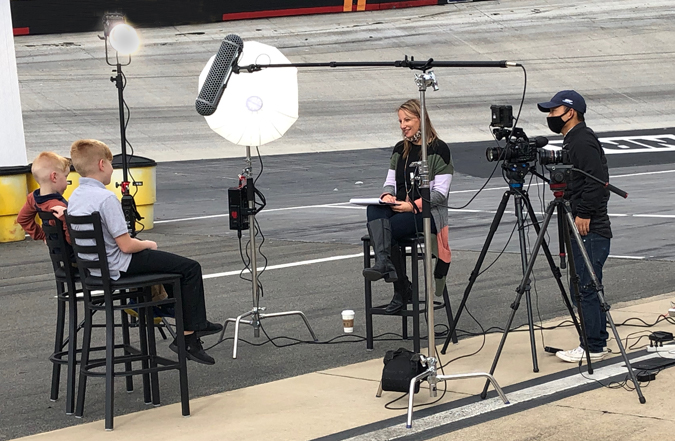
America’s Kids Belong is a nonprofit organization that has been working to increase the number of children adopted from foster care and improve their outcomes since 2015.
One of their signature programs is the I Belong Project, a partnership between America’s Kids Belong and state and local child welfare organizations to create recruitment videos for children in foster care who are legally free for adoption. A recent grant from the Children’s Bureau enabled them to expand the program into three additional states, bringing the total number of states they are working with to 11.
We talked with Americas Kids Belong President Brian Mavis about the I Belong Project.
Where did the idea of incorporating professionally produced video in children’s photolistings come from?
My wife, Julie, and I were running the Colorado Heart Gallery. During the photo sessions, we would witness the kids saying and doing some really compelling and touching things. One day a little girl came up to Julie and earnestly asked: When will I have a family? At that moment, Julie thought: I wish people could see what I see and hear what I hear. And the I Belong Project was born.
That was in 2011. We started working with one jurisdiction that year, and today, we’re partnering with 12 organizations in 11 states and have made videos of more than 1,700 kids.
Who are the children served through the project?
They are typically teens, though we’ve filmed single children as young as two. They’ve often been in the system for several years, and so they have that unfortunate moniker of being “hard to place.” We also work with a lot of sibling groups and children who have special needs.
It’s a pretty diverse group, but one thing that all of the children have in common is the desire to participate in the project. Every child we work with wants to be filmed and share their story. If they change their mind at any time, we stop. Because our goal is not just to make a video. It’s to involve the children and give them a positive experience.
You added three sites through the Children’s Bureau grant, but the demand for your work still exceeds your capacity. How do you decide which organizations to work with?
We don’t just go where we’re needed, we go where we are wanted. I describe it as going where we feel tailwind—enthusiasm that will help to propel our project forward.
We are a staff of about 40, and we respond to every request we get from a child welfare system or organization. Once we start talking, it quickly becomes apparent if things are going to come together easily and if the child welfare system is going to trust us with their kids.
I like to tell people that the innovation driving the I Belong Project wasn’t the technology. The innovation was trust. And we’ve been very successful in building that trust with child welfare systems. We’ve only lost one partner site in the six years we’ve been doing this, and that was because they decided to take the program over and do it themselves.
What is the process of creating a child’s video?
It begins with the state or organization identifying the child or sibling group and the children agreeing to participate.
Once we are given our marching orders, we send out an interviewer from our staff to lead the recording process. All of our interviewers are either trained social workers or are trained in trauma. They work with a local video team, and often local volunteers, to interview and film the kids at a venue that has something fun to offer—places like a park, farm, or petting zoo. We really want this to be a positive experience and happy memory for the kids.
The video editing is done back at our office, by our team of professional editors, and then reviewed by two staff members who are looking for anything that could unintentionally identify the children—things like a school logo, a street name behind them, or a landmark.
How do you measure success?
Our driving goal is for children in foster care to have safe, loving families. Of the 1,700 children we’ve worked with on the I Belong Project, over 50 percent of them have been matched with a permanent family. That’s certainly one important way of measuring success.
A second measure of success that might surprise people is that we’ve seen a change in public perception in our service areas. The likelihood of older children being placed with families increases the longer that we’re in a state or region. They see our videos for a while, and their ideas about adoption expand. Maybe they stop thinking “infant” when they think about adoption and start thinking about older kids and teens. Or maybe they realize that what they thought was an empty nest is actually an open nest.